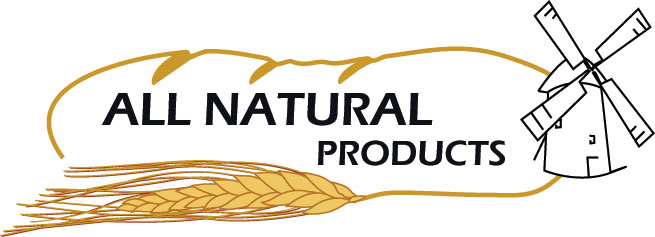Title Page
-
Site conducted
-
Conducted on
-
Prepared by
-
Location
Assessment
1. Is our outside perimeter secure?
-
Fencing restricts entry, within reason, and is inspected regularly.
-
Gates are locked when not in use to limit access to the operation.
-
Locks are located on exterior doors (deadbolts with a minimum throw of 1.5 inches are recommended), windows and other access points.
-
Vulnerable areas are well lit to make them more easily observable.
-
Cameras have been installed to make areas visible in a different way and to deter potential wrongdoers. (Even cameras that are not operational but simply visible can act as a deterrent.)
-
Exterior doors are metal or metal-clad and have tamper-resistant locking mechanisms.
-
Signage limits access to authorized persons or gives instructions for secure entry.
2. Is access within your operation limited?
-
Interior doors are locked to restrict access to sensitive areas.
-
Key inventory is kept up to date. Keys are returned by terminated employees. Keys are not left in machinery stored outside of buildings.
-
Exterior ladders used to access rooftops or storage bins are secured to prevent unauthorized access.
-
Interior windows are secured as necessary to limit access to sensitive areas.
-
Interior vents are locked as necessary to limit access to sensitive areas.
-
Interior signage limits access to sensitive areas.
-
A visitor log is maintained to record visitors’ identification and the date and time of their visit.
-
Visitors park in a designated area that is monitored.
-
Computer system is password protected, has limited access and is protected from viruses. (Wrongdoers accessing an unprotected system can alter records to conceal tampering.)
3. Are your processes or procedures secure?
-
Procedures in general limit access to sensitive areas and ensure vulnerable production activities are observed by one or more employees at all times.
-
Machines have locked lids or secure openings or are observed by employees to prevent tampering.
-
Animal feeding procedures limit access, increase visibility and prevent tampering.
-
Production lines are enclosed where possible and observed at key points to limit opportunities for tampering.
-
Suppliers have a food defense plan. Contracts have been negotiated with suppliers requiring seals or locks and a procedure for checking them on delivery.
-
Uniforms do not leave the operation at any time unless with a laundry service.
-
Laundry service can describe the security of their operation as well as their pickup and delivery procedures.
-
In-house laundry facilities are secure and have procedures for daily uniform collection and distribution.
-
Visitor and employee personal items are not taken into production or other sensitive areas.
-
Visitors are supervised by an appropriate employee at all times.
4. Is your shipping and receiving system secure?
-
Loading area has limited access and procedures to deal with security issues such as sealing loads and recording seal numbers.
-
Unloading area has procedures to deal with unscheduled deliveries, checking delivery invoices and moving deliveries into storage.
-
A designated employee checks package integrity before supplies are placed in storage.
-
Trucks and trailer bodies within the facility are secured even when empty.
-
Contracts have been negotiated with carriers so that liability is with the carrier while goods or products are in their possession.
5. Do you have an inventory system for stored materials?
-
Inventory is maintained on feed materials and additives. (This practice calls attention to extra materials, which may be a sign of contamination.)
-
Hazardous production inputs are secured when not in use to prevent their being used to damage or intentionally contaminate your operation.
-
Inventory of raw materials is reconciled with shipping invoices to identify overages or shortages, which might be an indicator of contamination.
-
Inventory of packaging materials is reconciled with delivery invoices.
-
Chemical inventories are reconciled with records of delivery and usage.
-
Pharmaceutical usage is noted and reconciled with inventory.
6. Is access to your water supply limited?
-
Water source is tamper-resistant, wellhead is locked, and external water pipes do not have openings.
-
Inside water lines either have locks on access points or have access points that are easily observed by multiple employees.
-
Ice-making facilities have limited access. For facilities separate from processing areas and not easily observed, steps have been taken to increase observation or otherwise limit the opportunity for tampering.
-
Livestock water systems are easily observed by employees, family or neighbors.
7. Is mail opened away from sensitive areas?
-
• Mail is opened in a room separate from production areas with a separate ventilation system.
8. Do you have screening and training procedures for your workforce?
-
Before an employee is hired, background, reference and credit checks are run.
-
Employees receive basic security training on how to recognize and deal with suspicious activities and to whom to report such activities.
9. Is access to sensitive areas limited?
-
Storage area access is limited by locked doors, entry logs or employee observation.
-
Livestock access is limited with fences and signage.
-
Processing and packaging area access is limited by locked doors, signage that restricts access, or employee badges or color-coded uniforms that designate work areas.
-
Feed storage area access is limited by locked feed storage bunkers or by regular observation by employees, family or neighbors.
-
Chemical storage area access is limited by locked doors, signage, entry logs or chemical usage logs.
-
Maintenance area access is limited by locked doors, signage or color-coded uniforms for maintenance employees.
Sign-off
-
Completed by:
-
Date Completed:








